Managing Labor Expectations During Worker Shortages
As restaurants and bars begin to open up to greater capacity following the pandemic, restaurant owners seek to combat the adverse effects of COVID.
From closing doors and restrictions on indoor seating to worker shortages, more restaurants are making adjustments to recoup the loss of time, business, and profits.
Unfortunately, the worker shortage is currently one of the highest deficits affecting the restaurant industry. With a smaller staff, restaurants have had difficulty keeping up with customer demands and services.
It’s time for restaurants to implement new strategies to reduce labor burdens and entice workers to return to work following COVID.
Here are six ways restaurant and bar owners can keep up with demands while managing labor expectations during worker shortage:
Reduce Menu Offerings
Restaurants may consider operating on a limited menu to compensate for a smaller staff and reduced costs. To curate a smaller menu, select the most popular and profitable options. Align your meals with your restaurant's brand identity by showcasing your customers' favorites.
When you trim down your menu options, you’ll reduce inventory costs, ease the workflow for staff, and improve ordering service for customers. More customers are speaking about decision fatigue and the frustrations they face with long menus. Smaller menus allow you to avoid that while simplifying the workflow for reduced kitchen staff.
Benefits to trimming down your menu:
- Increasing worker efficiency: There’s less for the front-of-the-house and kitchen staff to manage with a smaller menu. Providing limited options allows your employees to enhance the food quality while maintaining a comfortable pace.
- Reducing labor costs: Rather than forking out money on ingredients and produce that could go to waste, a smaller menu allows you to invest in a set inventory, purchase in bulk, avoid food waste, and reduce the cost of goods.
- Enhancing your training process: If you're looking to gain and maintain recruits, a limited menu simplifies the training process, avoids premature burnout, and provides a stress-free transition for you and your new employees.
- Impressing customers with a specialized menu: When a restaurant's menu focuses on a few cuisine options rather than many, it shows customers that you specialize in quality and taste. Customers are searching for top-notch meals, and a small menu offers just that.
Cutting down on food waste: A condensed menu allows you to focus on a few ingredients, sparing food waste and increasing profit.
Offer Higher Wages for Restaurant and Bar Staff
According to Business Insider, approximately half of former hospitality workers state that they will not return to their previous jobs, with 45 percent of workers commenting that they want higher pay. Additionally, studies have shown that workers are less inclined to return to work while COVID-19 unemployment benefits pay more than the average restaurant wage for kitchen, cleaning, and serving.
With the concern of worker shortages extending and straining the restaurant industry, larger companies—including McDonald's, Papa Johns, and Chipotle—are taking the initiative to raise wages to entice new applicants. So if you're searching for new workers, consider offering more pay. When you present higher wages, you show potential employees their work and time are valued at your restaurant.
Eater details that many restaurant and bar workers feel like their industry is exploitative, unsustainable, and doesn't match the cost of living. Restaurants can manage labor expectations and attract new workers by providing a liveable wage, alleviating labor concerns and allowing your restaurant to open at full capacity.
Provide Overtime Benefits
Consider appealing to potential workers with additional overtime benefits. People are less willing to work overtime for very little return; however, workers may be more inclined to work for your restaurant when you offer additional incentives.
Some benefits you can provide include paid time off, flexible vacation, and promotions. If you cannot offer monetary benefits, consider other incentives to interest recruits and maintain your regular staff. For instance, you may assign preferential sections or larger parties to dedicated employees, vocalize your acknowledgment of employees' efforts, and provide free meals.
By providing a positive and safe environment, you show your workers that you care about their work ethic and well-being. In addition, offering free meals is beneficial to cut down on food waste and reduce workers’ income strain.
Take Advantage of Third-Party Delivery Services
If your restaurant is understaffed, consider trying out a third-party delivery service to bridge the gap with your customers and bring in some income. Delivery apps, such as Doordash, GrubHub, and Uber Eats, can benefit your restaurant by depending on delivery workers instead of hired employees.
According to Forbes, delivery platforms can increase your restaurant's visibility, create accessibility for customers, and simplify the ordering process. Throughout COVID-19, many restaurants have had to shut down due to restrictions on indoor dining. Many restaurants converted to take-out and delivery services only.
Developing a third-party delivery option can allow you the freedom to keep your doors open without burdening your staff during worker shortages. While restaurants can increase revenue through delivery apps, be mindful that third-party software companies take a percentage of the revenue.
Limiting Restaurant Hours
Avoid stretching your limited staff too thin by reducing your restaurant's hours. In addition to a lack of responses from job applicants, an increasingly common issue that restaurants are facing is walkouts due to busyness and a small staff. When you operate on full hours at full capacity, you could risk slower business, walkouts, and unsatisfied customers.
On the other hand, running during limited hours allows you to reestablish business, optimize worker performance, and provide better service for your customers. Your restaurant may even see an increase in demand during limited hours instead of a couple of bursts during a full day.
Closing Temporarily
Many businesses are closing their doors temporarily due to not having enough staff to manage the workload. Business Insider states that reductions in work hours have forced many restaurants to increase menus' prices and ultimately close.
Temporarily closing your restaurant is a worst-case scenario and should be avoided at all costs. Instead, consider the alternative recommendation of limiting your restaurant hours so that you can continue to earn revenue, maintain a small staff, and keep your patrons satisfied.
The worker shortages have pushed restaurant and bar owners to consider a plan B, especially when staff cannot work. From reducing the menu and offering more pay and benefits to relying on delivery platforms and limiting restaurant hours, there are solutions for restaurant owners to keep their business afloat.
Restaurant and bar owners can also increase profit margins and simplify restaurant management with a robust POS system. Running a business during a labor shortage places heavy demands on business owners. However, a great POS offers advanced inventory tracking and detailed sales reports for more efficient restaurant management. Manage your labor expectations by making choices that benefit your restaurant or bar.
Need help implementing a restaurant management POS system? The team at Total Touch POS is here to help! Contact us today about a free POS software demo.



